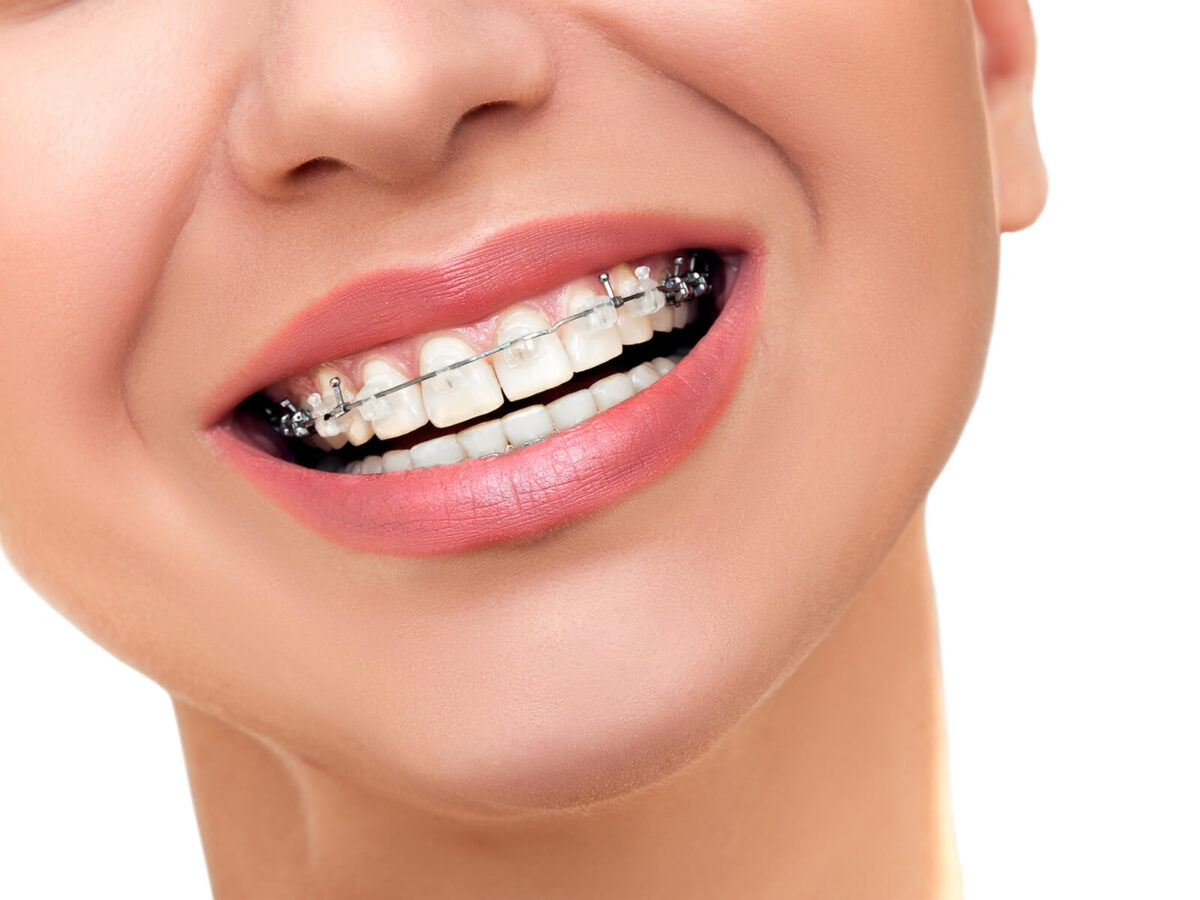Blog
Dental hygiene tips for healthy teeth & gums

How To Whiten Your Teeth While Wearing Braces
Dental braces are commonly used to align your teeth. Many people discover that their teeth need to be positioned correctly. However, this isn’t the only result of misaligned teeth; your smile can also be negatively impacted. An overbite, TMJ, and other jaw problems can also result from misaligned teeth. Wearing braces is a wise approach.
However, there is a slight drawback to braces: How can one ensure that they keep their dentures clean and white?
Why do teeth discolor while in dental braces?
Teeth discoloration with braces wear can occur for several reasons. The first and most frequent reason is food particles. They get lodged between the wires and brackets, eventually staining the area.
Red wine, tea, and coffee are a few more drinks that can eventually discolor teeth. Lastly, because braces restrict the toothbrush bristles from thoroughly cleaning all parts of the teeth, they might occasionally result in discolored teeth. Cleaning in between your teeth is considerably more challenging.
Tips for a Brighter Smile: How to Whiten Teeth
Teeth whitening is significant as many factors lead to the formation of stains on the teeth. Below are a few methods to keep your teeth white while using braces:
At-Home Teeth Whitening
Numerous over-the-counter teeth whitening solutions can be used for at-home teeth whitening, such as whitening strips, toothpaste, and gels that can be applied directly to teeth.
Whitening Toothpaste
Your daily routine can remain unchanged while using whitening toothpaste to help whiten your teeth. Since whitening toothpastes have mild abrasives, they can be used to eliminate external stains from the surface of your teeth. These formulations mostly use polishing rather than bleaching to alter the tooth’s look.
Some whitening toothpastes have more recent formulations capable of eliminating inherent stains. These toothpastes are highly effective with their innovative whitening composition, using millions of active oxygen bubbles to lighten tooth stains.
In just three days, it begins to lighten the teeth. You can acquire a whiter smile at home by using whitening instead of regular toothpaste and brushing your teeth twice daily for two minutes.
Whitening Strips
Whitening strips are made of flexible plastic and are used to put a tiny coating of bleaching solution directly onto your teeth. Usually, hydrogen peroxide is the active component. Even though strips are affordable and practical, if your teeth need to be positioned, they could be challenging to stick straight to the enamel.
The strip application process takes 30 to 60 minutes for them. Please read the label carefully and follow all instructions to avoid any issues. Improper use can result in tooth discomfort, gum inflammation, and enamel erosion.
Whitening Solutions
Custom protective trays and whitening solutions are another at-home whitening technique. This custom tray minimizes the amount of gel that touches your gums, lowering the chance of irritation.
Teeth Whitening with a professional
Professional Teeth Whitening procedures use various techniques, such as in-office procedures that combine potent whitening ingredients with cutting-edge technologies like laser or LED light activation for quicker results.
In-Office Whitening
A firmer peroxide gel is used for in-office teeth whitening procedures at dental clinics than at-home alternatives. When using the whitening gel, your dentist will take all necessary precautions to safeguard your gums by applying a protective gel. Everybody may react to it uniquely.
Take-Home Trays
Brightening your teeth with a take-home tray is a convenient and speedy method. Your dentist will take an impression of your teeth to create custom trays that exactly fit your teeth. After they are delivered, your dentist will provide you with instructions on how to use your trays at home.
How to Keep Your Teeth White While Wearing Braces
Cleaning in and around your braces multiple times a day is still necessary, even if you want to have your teeth professionally whitened. Although your braces may present some challenges, these are easily overcome with perseverance and hard work.
Mouth Rinse
After consuming any food or beverage, especially sugary or acidic, thoroughly rinse your mouth with water. It is beneficial for your oral health and cleaning and clearing debris from your braces, which can lead to plaque. Even if you cannot brush immediately away, make it a point to do this.
Try An Interproximal Brush
Orthodontists advise using interproximal brushes to target particles intermingled between your braces, sometimes called “in-betweeners.” It is small enough and just sufficiently movable to get into places where a larger brush cannot.
Conclusion
If your objective is teeth whitening, it might be a good idea to avoid eating anything acidic or sugary while wearing braces. It will lessen any potential discoloration as much as possible and facilitate getting your teeth whitened.
Even though you’re wearing braces, you’re still eating three square meals a day, and the food particles and plaque could easily get tangled in the wires and brackets. That may eventually harm or discolor your gums and teeth. Using the above methods can help you keep your teeth cleaner and whiter.


